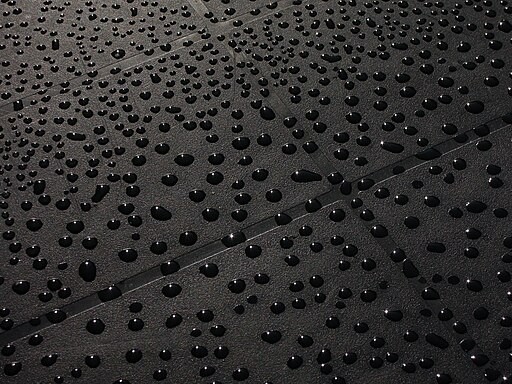Regularly cleaning surfaces of materials at home is one of the most challenging household chores since surface dirt will be constantly encountered. Surface dirt could be dust, dirt, or particulate matter accumulating on an object's surface. At the University of Sydney, a team of researchers has developed a new type of coating that can make surfaces self-cleaning.

Path to a Self-Cleaning World
Researchers have observed oil molecules retain liquid-like properties when chemically bonded to solid surfaces as a skinny layer. This discovery opens new possibilities in designing sustainable materials with non-stick characteristics.
The coatings studied by the team are known as slippery covalently-attached liquid surfaces (SCALS). Led by Dr. Isaac Gresham, the researchers produced the SCALS from silicones or polyethylene glycol, which both break down into harmless byproducts in the environment. SCALS is an anti-adhesive that does not rely on problematic perfluorinated polymers (PFAS), also known as "forever chemicals," utilized for their low adhesion properties.
The liquid-like layers of molecules are extremely slippery to most contaminants. Shedding liquid droplets effortlessly increases the efficiency of heat transfer and collecting water. They also prevent scale buildup and resist the adhesion of ice and bacteria. According to Professor Neto from the Nano-Interfaces Laboratory, this breakthrough brings humanity closer to a world of self-cleaning materials.
The researchers correlated the exceptional performance of these layers with their nanostructures. Since they know what they are aiming for when designing slippery surfaces, it enables the scientists to make them even more effective and offer practical substitutes for fluorinated coatings. The slippery nano-thin layers measure from two to five billionths of a meter or 10,000 times thinner than human hair. They are made up of oil molecules which are only a hundred atoms long.
A droplet of water glides over a thick oil film without friction, but if the oil film is completely removed, most of the water droplets will stick to solid surfaces. It is a challenge to identify how thin the oil layer can be on a solid surface before it gets no longer "liquid-like." According to Neto, the definition of a liquid becomes somewhat slippery at the nanoscale level.
READ ALSO: Car Self-Healing Coating Gets Rid of Surface Scratches When Exposed to Sunlight
Decoding the Secrets of Liquid Coatings
To decipher the secrets of their ultra-thin liquid coatings, the research team used two methods to see the surface layers. The first technique, called single-molecule force spectroscopy, measures the length of individual molecules aside from the force needed to stretch or compress them. The second one is neutron reflectometry, which enables the researchers to measure molecules' length and grafting density.
It was revealed that if the liquid molecules were too short and barely attached to the solid surface, they could not adequately cover the underlying solid surface add remain in their sticky form. Meanwhile, molecules that are too long or attached too densely are not flexible enough to act like a liquid. For SCALS to be effective, they must be in a Goldilocks zone where they are neither too short nor too long nor packed too loose or tight.
RELATED ARTICLE: New Nanothin Coating Kills Superbugs, Fungi, Bacteria: Here's How It Works
Check out more news and information on Coating in Science Times.














